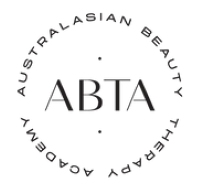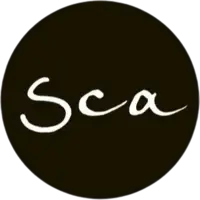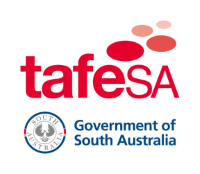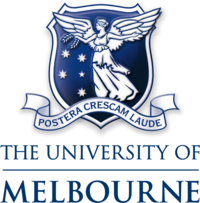
How do I become a animator?
Bachelor of Animation
- There are no mandated entry requirements.


Diploma of Screen and Media
- There are no mandated entry requirements.








Certificate IV in Screen and Media (Animation and Game Art)
- There are no mandated entry requirements.
 North Metropolitan TAFE
North Metropolitan TAFE
Diploma of Screen and Media (Animation, Gaming and Visual Effects)
- There are no mandated entry requirements.




Certificate IV in Screen and Media (Animation and Visual Effects)
- There are no mandated entry requirements.


Bachelor of Arts (Digital Media)
- There are no mandated entry requirements.





Bachelor of Fine Arts (Animation)
- There are no mandated entry requirements.


Diploma of Screen and Media (Animation)
- There are no mandated entry requirements.
 Swinburne University of Technology
Swinburne University of Technology
Related occupations
3D Modeller
A 3D Modeller creates characters and landscapes using various materials, requiring creativity, problem-solving skills, and teamwork.
Junior Animator
A Junior Animator assists in creating animations by preparing storyboards, scenes, and frames, using various techniques while following directions and meeting deadlines.
Digital Animator
A Digital Animator creates animated scenes for media, collaborating with teams, following directions, and using digital software to meet production deadlines.
Digital Artist
A Digital Artist creates and edits visual media for online use, collaborates on shoots, and stays updated on trends while managing deadlines.
2D Animator
A 2D Animator creates animated content for films, games, and ads, using digital tools to bring characters and stories to life.
2D Designer
A 2D Designer creates visual content for digital and print media, focusing on engaging graphics and layouts that meet project goals.
2D Rigger
A 2D Rigger creates digital skeletons for characters in animation, ensuring realistic movement through flexible rigs for films and games.
Motion Designer
A Motion Designer creates animations and visual effects for videos and advertisements, ensuring brand consistency while collaborating with teams and clients.
Junior Storyboard Artist
A Junior Storyboard Artist sketches scenes for films, animations, or games, collaborating to visualise key moments and develop storylines.
Junior Concept Artist
A Junior Concept Artist creates visuals for media projects, sketches ideas, and collaborates with senior artists to refine designs and uphold vision.
3D Animator
A 3D Animator brings characters and environments to life using animation software, creating engaging motion sequences for films and games.
3D Designer
A 3D Designer creates 3D models and visual content for gaming and film, focusing on high-quality designs and collaboration to meet project goals.
3D Texturing Artist
A 3D Texturing Artist creates surface textures for 3D models, enhancing realism and aesthetics through UV mapping and collaboration with animators.
3D Rigger
A 3D Rigger creates digital skeletons for characters in animation, enabling realistic movement through functional rigs for films and games.
Motion Graphics Designer
A Motion Graphics Designer creates engaging animations and graphics for videos and advertisements, collaborating with teams to ensure brand consistency.
3D Visualiser
A 3D Visualiser creates realistic 3D models and renderings for products and architecture, effectively communicating concepts through collaboration with clients.
VFX Designer
A VFX Designer creates and integrates visual effects for film, TV, and games, collaborating with teams to enhance storytelling through detailed graphics.
3D Artist
A 3D Artist creates detailed 3D models and environments for games and films, focusing on textures and lighting to enhance visual quality.
Concept Artist
Concept Artists create visuals for gaming, film, and animation, developing characters and environments through sketches and digital artwork.
Lead Artist
A Lead Artist directs the artistic vision of projects in gaming, film, or animation, collaborating with teams and managing workflows while ensuring quality and consistency.
Technical Artist
A Technical Artist bridges art and programming, creating assets, optimising workflows, and troubleshooting technical issues in visual projects.
Character Designer
Character Designers create and develop unique characters for media like animation and video games, focusing on aesthetics and personality traits.
Storyboard Artist
A Storyboard Artist creates detailed drawings that visualise scripts, outlining the sequence of stories for film, TV, or animation.
Visual Effects Artist
A Visual Effects Artist creates digital effects for film, TV, and games, collaborating with teams to enhance visual experiences.
VFX Artist
A VFX Artist creates visual effects for films and games, collaborating with teams to enhance storytelling through realistic and imaginative visuals.
Common questions
How much does an Animator earn?
In Australia, a full time Animator generally earns $1,400 per week ($72,800 annual salary) before tax. This is a median figure for full-time employees and should be considered a guide only. As you gain more experience you can expect a potentially higher salary than people who are new to the industry.
What are the job opportunities for an Animator?
This industry has seen a strong increase in employment numbers in recent years. There are currently 2,100 people working as an Animator in Australia compared to 1,800 five years ago. Animators may find work in larger towns and cities where media productions are based.
Source: Australian Government Labour Market Insights
How do I become an Animator?
If you’re planning a career as an Animator, you could enrol in a Certificate IV in Digital Media Technologies. This course will show you how to develop and use digital media technologies and create 2D digital animations. You could also consider a Certificate IV in Digital and Interactive Games or a Diploma of Screen and Media.
Further reading


How to become a multimedia designer
4th November 2019)

